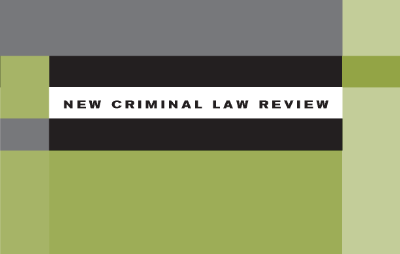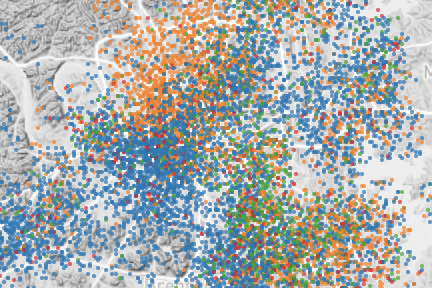Data and policing
A large-scale analysis of racial disparities in police stops across the United States
E. Pierson, C. Simoiu, J. Overgoor, S. Corbett-Davies, D. Jenson, A. Shoemaker, V. Ramachandran, P. Barghouty, C. Phillips, R. Shroff, and S. GoelNature Human Behaviour, Vol. 4, 2020.
We analyze a unique dataset of nearly 100 million traffic stops carried out by state and local law enforcement agencies.
Are traffic stops prone to racial bias?
V. Ramachandran and K. Kramon.The Marshall Project
An attempt to find out if traffic stops are prone to racial bias confronts a frayed patchwork of data across the country.
The problem of infra-marginality in outcome tests for discrimination
C. Simoiu, S. Corbett-Davies, and S. Goel.Annals of Applied Statistics, Vol. 11, 2017.
We introduce a new statistical test of discrimination — the threshold test — that mitigates problems with traditional measures of bias.
Fast threshold tests for detecting discrimination
E. Pierson, S. Corbett-Davies, and S. Goel.The 21st International Conference on Artificial Intelligence and Statistics, 2018.
We develop a method for fitting threshold tests that is two orders of magnitude faster than past approaches, reducing computation from hours to minutes.
Precinct or prejudice? Understanding racial disparities in New York City's stop-and-frisk policy
S. Goel, J. Rao, and R. Shroff.Annals of Applied Statistics, Vol. 10, 2016.
With statistically informed rules, police departments can reduce police stops and mitigate racial disparities without sacrificing public safety.
Combatting police discrimination in the age of big data
S. Goel, M. Perelman, R. Shroff, and D. Alan Sklansky.New Criminal Law Review, Vol. 20, 2017.
The exponential growth of information about police activity offers new opportunities to improve the fairness and effectiveness of law enforcement.
Related work
An Analysis of the Metropolitan Nashville Police Department’s Traffic Stop Practices
Alex Chohlas-Wood, Sharad Goel, Amy Shoemaker, and Ravi ShroffWhite paper, 2018
Examining the Metropolitan Nashville Police Department’s (MNPD) traffic stop practices in 2017, drawing on an extensive dataset of records provided by the department.
Simple rules for complex decisions
S. Goel, J. Jung, C. Concannon, R. Shroff, and D.G. Goldstein.Working paper, 2017.
By following simple guidelines for setting bail, judges can detain half as many defendants without appreciably increasing the number who miss their court dates.
Algorithmic decision making and the cost of fairness
S. Corbett-Davies, E. Pierson, A. Feller, S. Goel, and A. Huq.Proceedings of the International Conference on Knowledge Discovery & Data Mining, 2017.
When a judge makes a bail decision, there is tension between reducing racial disparities and treating all defendants equally. Video link
A computer program used for bail and sentencing decisions was labeled biased against blacks. It’s actually not that clear.
S. Corbett-Davies, E. Pierson, A. Feller, and S. Goel.The Washington Post
What does it mean for an algorithm to be fair?
Simple rules
J. Jung, C. Concannon, R. Shroff, S. Goel, and D.G. Goldstein.Harvard Business Review
Recognizing the real-world constraints managers and engineers face, the authors developed a simple, three-step procedure for creating rubrics that improve yes-or-no decisions.
Personalized risk assessments in the criminal justice system
S. Goel, J. Rao, and R. Shroff.The American Economic Review: Papers and Proceedings, Vol. 106, 2016.
In the criminal justice system, risk assessment tools can be used both to assist upcoming decisions and audit past actions.












Police data suggests black and Hispanic drivers are searched more often than whites
S. Goel and C. Phillips.Slate, 2017.
We filed public records requests to gain access to police data, and found evidence of racially biased policing.